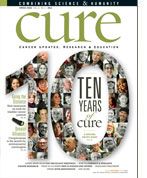Publication
Article
CURE
True Breast Cancer Prevention Requires Looking at Environmental Chemicals
Author(s):
A new report reveals more research is needed in addressing environmental chemicals and cancer.
Almost 20 years ago, women on Long Island and others on Cape Cod and in Marin County, Calif., transformed the question, “Why did I get breast cancer?” into “Why do we have so much breast cancer in our communities? Why is there more breast cancer in this generation than before?” They began asking questions about the root causes and the potential links to environmental chemicals. The goal was prevention—not just mammography to detect the disease and treatment to stop its progression, but genuine prevention.
The research that started from those questions about the environment reached a milestone in December with the Institute of Medicine (IOM) report on breast cancer and the environment. For the first time, a major medical organization issued a clear statement saying that science now documents plausible biological links between environmental chemicals and breast cancer risk.
[View the IOM's Breast Cancer and the Environment]
Several types of chemicals especially raise red flags. As we know from research on hormone replacement therapy, added hormones can increase the risk of breast cancer. So, too, may synthetic chemicals that act like estrogen, such as those in cosmetics, cleaners, plastics and other products. Breast carcinogens that damage DNA are another concern.
The IOM report highlighted three chemicals in particular, benzene, 1,3-butadiene and ethylene oxide, as having the strongest evidence. All three are in tobacco smoke. Benzene and butadiene are in gasoline and vehicle exhaust; ethylene oxide is a common sterilant used in medical settings and food preparation.
The IOM report sets important priorities for filling data gaps, including better chemical testing and assessments of effects on the breast throughout the life cycle.
Some readers responded with skepticism, saying the evidence so far is not “proof.” These critics missed the point that acting on biological evidence, rather than waiting for elusive proof in human studies, can make sense for a disease like breast cancer that develops over decades. To understand this reasoning, think about how we learn what influences disease. For new drugs, medical researchers first test the possibilities in laboratory studies and then, when the lab evidence looks good, begin clinical trials. Usually, patients are randomly assigned to the test treatment or a comparison group, and researchers watch to see whether patients on the new treatment do better or worse. But we would never do an experiment like that on suspect chemicals, for example, intentionally exposing half of a group of baby girls to see what happens. And we wouldn’t want to wait 60 years for the results either. Instead, we can use a confluence of evidence from laboratory testing and studies of people’s exposures to make safe decisions while we continue confirmatory studies long-term.
This strategy works. When we got lead out of gasoline, Americans’ blood-lead levels went down, and later effects on children were avoided. As communities banned smoking in public places, the rate of heart attacks and strokes fell significantly.
We still have work to do. Products aren’t always adequately labeled, so consumers can’t make informed choices, and many chemicals in products haven’t even been tested yet for effects on the breast. The IOM report sets important priorities for filling data gaps, including better chemical testing and assessments of effects on the breast throughout the life cycle. This research won’t pay off with a patentable drug or medical device, so it depends on public funding.
Our children and grandchildren are counting on everyone working to end the suffering from breast cancer—everyone who walks, runs, swims or shops—to hold cancer organizations accountable for investing substantial research dollars in prevention. We can begin reducing exposures to breast cancer-related chemicals too.
Julia Brody, PhD, is executive director of Silent Spring Institute.






